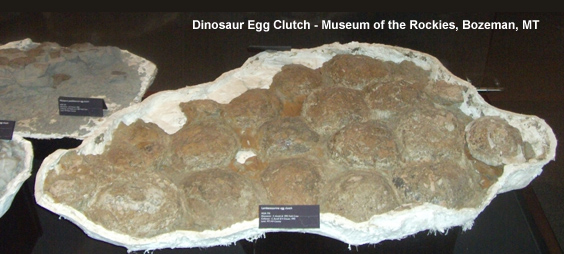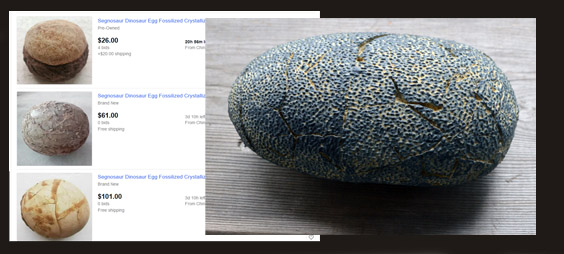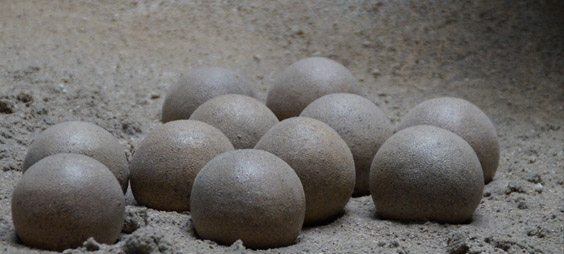Don't Stop Until You Have The Complete Story
Pathological Eggs: The formation of an egg is a complicated process that takes place within the dinosaur. The last step is putting the hard shell on the egg. Then it is stored in the mother's body until all of the eggs can be laid. If the mother is under stress and is prevented from laying the eggs, some of the eggs may have pathologies, meaning they are not normal. A common pathology is multiple shells. If the egg is unable to be moved into the storage area in the lower uterus, and moves back up into the shell making area of the uterus, a second shell will form. Only the most recent eggs to form within the mother would have this pathology. When dinosaur eggs are examined using an electron microscope these multiple shells can sometimes be detected. In one example 10% of fossil dinosaur eggs were found to have multiple shells. That is far in excess of what is common under normal conditions.
"Abnormal, multilayer eggshells are frequently reported in fossil specimens. Excavation of one clutch exposed 30 eggs, distributed in three levels, including 27 normal eggs and 3 multilayer eggs. The three abnormal eggs occupied the highest level within the clutch and represent the last eggs laid by the female sauropod." - Jackson et.al., "Abnormal, Multilayered Titanosaur Eggs From Insitu Clutches At The Auca Mahuevo Locality, Neuquen Province, Argentina" (2004)
"This abnormal condition often results from physiologic or environmental “stress” and prolonged egg retention by the female. A similar condition found in fossil dinosaur eggshell from France was purported to result from environmental stress associated with the Cretaceous extinction event." - Jackson, Schweitzer and Schmitt, "Dinosaur Eggshell Study Using Scanning Electron Microscopy" (20020
Many Eggs Have Not Hatched: We can't help notice that the dinosaur clutch replicas in our museum, as well as the clutches we've seen in other museums, nearly all have unhatched eggs. Kenneth Carpenter writes:
"A surprising number of whole dinosaur eggs are known, especially the big, spherical Megaloolithus eggs from France, India and Argentina. Why these eggs failed to hatch is a subject of much speculation." (Eggs, Nests and Baby Dinosaurs page 119)
The conclusion that makes sense is that they were buried before they could hatch.
There is possible evidence for hatched eggs in that some fossil dinosaur eggs are broken on top, with no egg shell fragments found inside. It is assumed this indicates that the shell was broken from the inside. Is this a valid assumption? I just ran a simple experiment. I cracked open the top of a chicken egg and sucked out the contents. No shell fragments were left inside. So broken tops could be a sign of predators. Also, Oard reports that, "Many of the broken top eggs have shells within the egg." (Dinosaur Challenges and Mysteries, page 105). This would indicate the tops of the eggs were broken by something other than hatching, such as sediment compaction or a predator.
Traces of Protein Found In Dinosaur Eggs Schweitzer, et.al in a paper titled "Molecular Preservation in Late Cretaceous Sauropod Dinosaur Eggshells" reported detecting protein in dinosaur egg shells. This is very interesting because proteins degrade rapidly and certainly do not last millions of years. It's an indication fossil dinosaur eggs are not all that old.
Next - Eggs, Evaluate The Evidence




